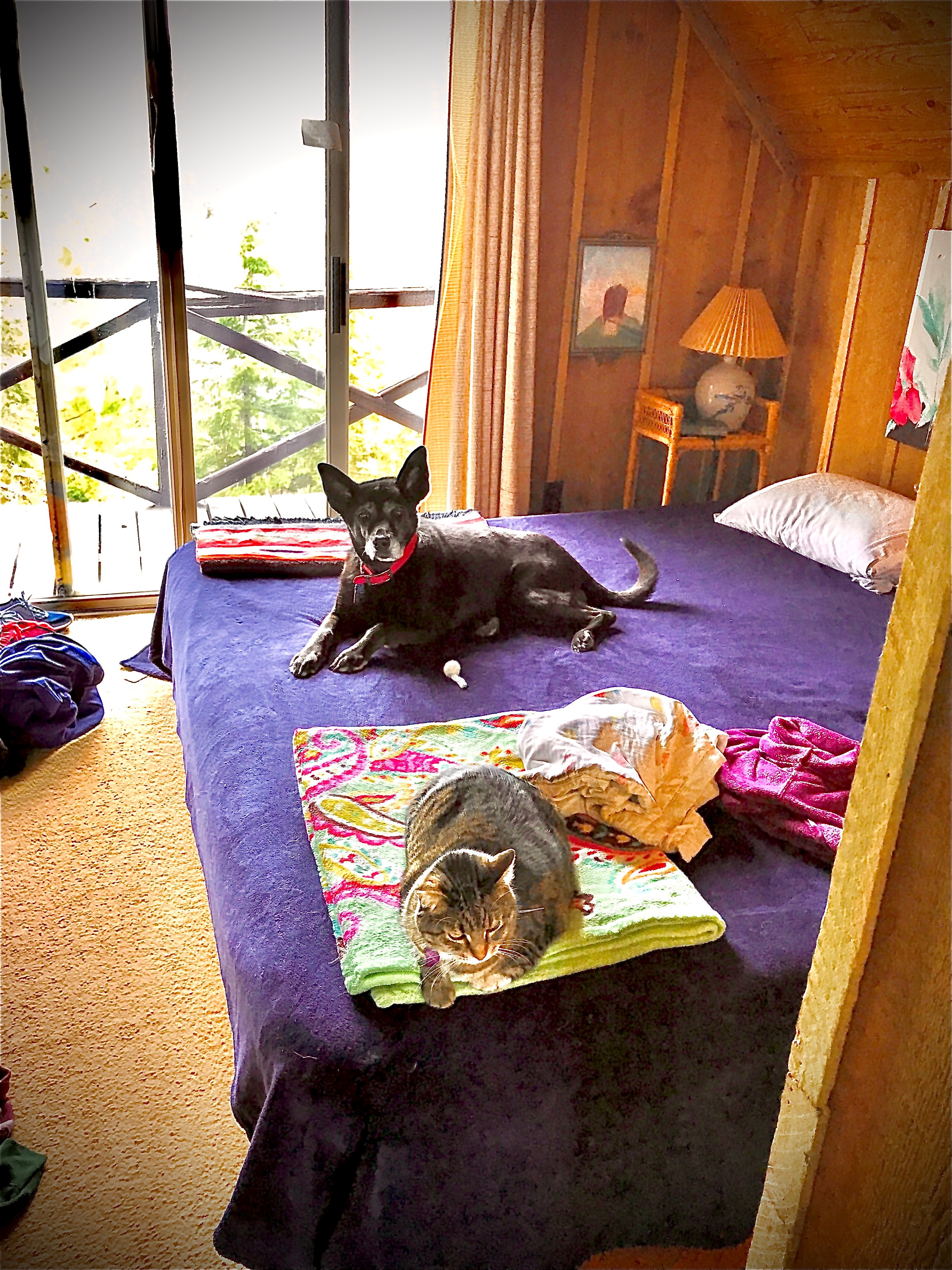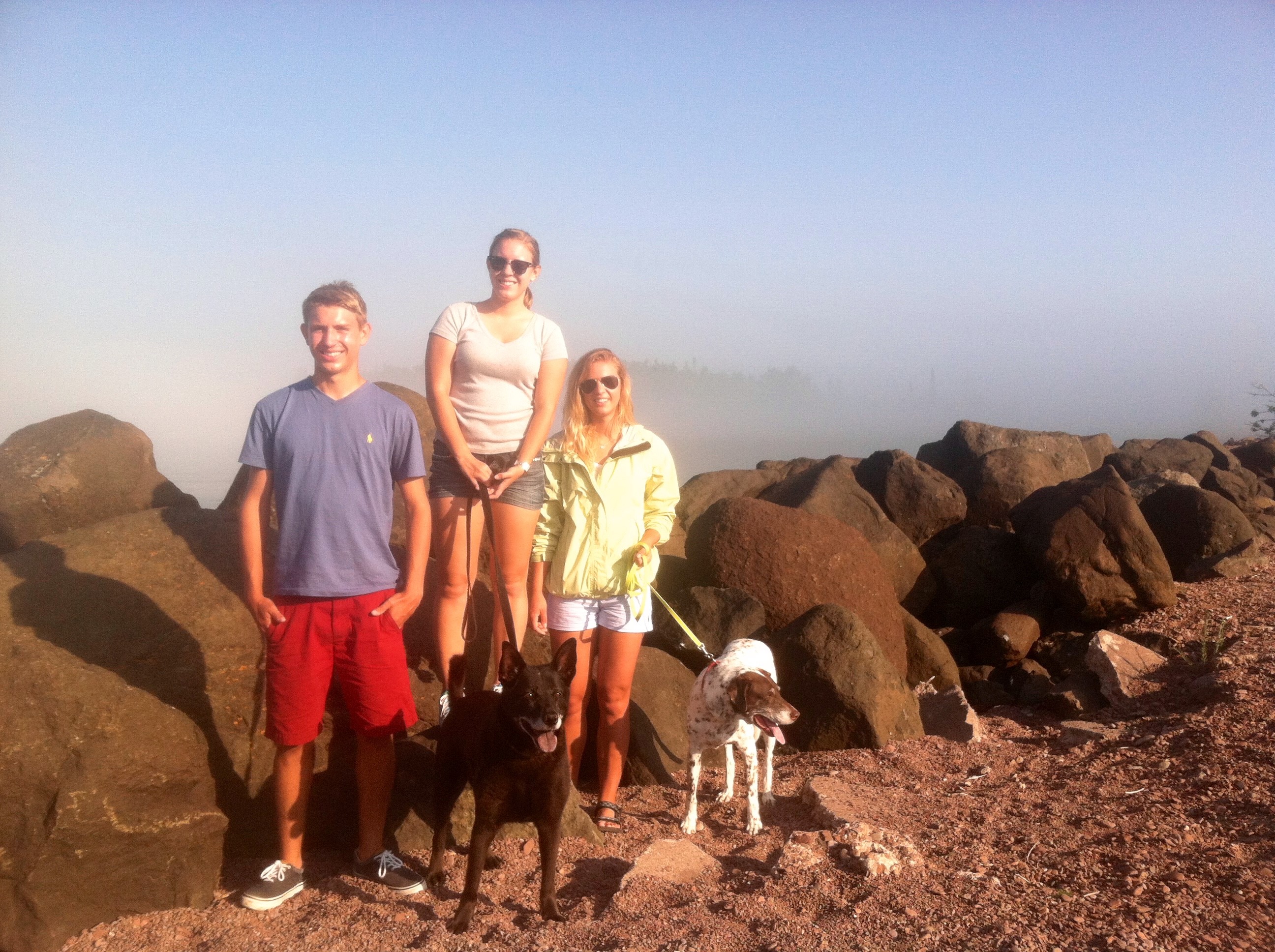


A Few Engineering Thoughts About COVID-19, and An Engineer in the Woods, Installment 29: Pets #9; Dog 7, Olive
Monday, March 30, 2020You can skip this serious part of my blog.
With the world in turmoil, I think it’s important that we find escape. My latest pet blog follows and is offered for that. However, I would like to share with you what’s in my head and why I don’t share in the panic that is surrounding me. To learn what’s in my heart, and the true reason behind my calm, visit Kristen’s and my church’s website at https://oursaviorjoliet.org/.
There are several aspects of my professional education that engineers who don’t work in my fields of water resource engineering may not fully appreciate. For stormwater designs our studies included weather and climate. For groundwater (and other applications) our studies included geologic history. For water and wastewater designs our studies included disease transmission and propagation. For EVERYTHING we studied probability analysis and risk. What we didn’t study, and should have, were public communication, psychology and sociology. Those fields sometimes leave me scratching my head, but I have learned a few things from reading and 57 years of observation.
The unfortunate people that work with me are too often the victims of my education, which didn’t end after my graduation last century, and still continues today. I’ll see something in the news, read something, hear something or, God forbid, pick something up from social media and feel that a rebuttal is necessary. My co-workers are my audience. Some of them wanted me to discuss the pandemic in this blog, but it would take me too long to write and too long to research the ACTUAL raw data without all of the different spins and “simplifications” we keep getting.
I want to avoid examples, numbers and opinions in this brief treatise. I do, however, want to explain critical and technical thinking. I know how to make numbers prove a point within engineering judgement, always being careful to not fall into the trap that, "Figures don’t lie, but liars figure” https://quoteinvestigator.com/2010/11/15/liars-figure/. Because of that knowledge I am quick to recognize when partial data is presented as the “full story.” Sometimes it’s done for the honest reasons of simplicity and brevity. Sometimes it appears to be done to continue a pre-conceived narrative that has been shown to enhance ratings. Sometimes it’s to get you to buy something, or to support a cause. But partial data can never be used to create a “full story” and complete data is too complex and too boring to be published in public media – even I would switch the channel, or scroll past the page after 30 seconds, it’s just human nature.
In short, COVID-19 has me more concerned for my business and the businesses of my friends and neighbors than it does for my health. Yes, I wash my hands frequently, disinfect EVERYTHING, avoid crowds, and we are allowing people to work from home (engineering firms are “essential,” so I’m still at my desk). But other than that, it’s life as usual. Stay Calm and Carry On!
And now for some distraction

Olive and Sean’s Cantankerous Cat, Pearl
I was the Chief Engineer of Will County Land Use from 2006 – 2010. When County Executive Walsh ask me to “fill-in” and get things running smoothly we thought it would be a few weeks, then a few months, and after four years it seemed that we had accomplished a lot, but it was time to move it back to a staff position – the work was challenging, and rewarding, and I miss it (sometimes).
My Chief of Staff was Anita, and since I was only at the Land Use Offices 3 partial days a week (and she had been there 15 years longer than me) she really did all of the work. We worked well together. Like me, she had a soft spot for animals and especially dogs. One morning we were chatting, and she mentioned that a friend had a dog for which she had to find a home. She didn’t know what kind it was, but it was black with stupid looking giant ears. We had to put Echo down a couple years or so earlier, and Birch seemed lonely. I also did some quick math.
- Ricky (our youngest) would graduate from high school in 5 years.
- Birch was 8 years old.
- 8+5 = 13. The normal life span for a 60-pound dog is about 10 - 12 years. It was likely that Birch would not survive until Ricky’s graduation.
- When the kids were gone, we wanted the pets to be gone as well so that we’d be free (that didn’t work-out, but that’s another topic).
- If Birch passed before all the kids were moved-out, we would probably have to get another dog. (see #4)
I spoke at length with the dog’s owner. Olive was a four-year-old, 60-pound Shepherd-Chow mix. She was their first child and was great with their first baby since they essentially grew-up together. However, they now had another baby and Olive seemed unhappy and had started nipping at their toddler. Olive needed a new home. Our neighbor on the lake in Minnesota had had a Shepherd-Chow, Rodney, whom we had loved. Olive was young enough to survive until the kids moved-out, but old enough that she would not survive too long after that. Kristen agreed with my icy-hearted reasoning and we arranged for Olive to come over for a visit the next Saturday.
When Olive arrived, she and Birch became immediate friends and her soon to be former parents were thrilled that we had a good home for her. They told multiple stories about her, one of which stuck with me.
They were on a camping trip (I forgot where), and Olive escaped for a brief run. She got into a fenced pasture and when her owners caught-up and found her, she was standing proudly next to an irate rancher and his dead emu. They thought the bird may have died from a heart attack (Olive could be scary if she wanted, though that was very seldom). Once we adopted her, we often introduced her as our Emu Killer.
Big Ears, Deep Thinker
Olive was our seventh dog, but was our first dog that seemed to really need constant companionship. She was never more than a few steps from a member of our family, unless she was running around the yard with Birch. She was also challenged by the weight of her over-sized ears. Therefore, she was almost always resting her head on the nearest companion. Sometimes it was Birch’s back, or one of the kids, but oftentimes it was my lap. If I sat down to watch TV or just to read, Olive would immediately appear to my left, nudge my knee with her nose, then drop her head onto my thigh thus relieving ear weight from her neck. If she had something that she wanted from me, she would look up at me and sigh. I would place my hand on her forehead between those huge sound catchers and could tell if she was thinking or just tired. When something was on her mind, her forehead became blistering hot! I couldn’t always discern what she was thinking but it was obvious that she thought a lot! She wasn’t our smartest dog, so she probably had to think more about fewer things than some of our other pets, but she did a lot of thinking and I think they were almost always good thoughts. She was a sweet dog.
Buffalo
There were two words that Olive did not like. “No,” would make her crumple as if she had been shot. She lived to please, and the realization that she did something that we didn’t like was soul-crushing. It took us a while to learn her other trigger word.
One of our best family trips was to Glacier National Park. I could write a book about that trip, the drive in the Flower Van there and back (including another Chrysler breakdown leading to two memorable days at auto shops in Gillette, Wyoming), a rodeo, a rafting trip, caves, trail rides, death marches, climbing a glacier and using the ice to chill a rare scotch (Mom and Dad only), a broken tooth, bicycle crashes, sleeping on mountain tops, buffalo, grizzlies, goats, elk, “swimming” in a glacial lake… The kids were little then, and they still talk about it even as adults. Car radio stations were few as we drove through the mountains between adventures, but at one point we came across a repository of native American stories. One of those stories was a poem that must have been called “Buffalo.” It was read by a very serious native American with a deep, soulful voice. It caught us by surprise, and we only heard it once, so we weren’t able to memorize it, but once we heard it, it was permanently imprinted on our brains.
I wish I could find the actual poem, but here is my best attempt at a facsimile. To get the effect, read it out-loud, in your lowest voice. Speak each word slowly, hanging on each syllable. Pause between each word, it should take you close to ten minutes to read it at the proper pace…
Buffalo on the prairie……………...… Buffalo…
Buffalo hunted ………………………. Buffalo…
Buffalo runs…………………………...Buffalo…
Buffalo, Buffalo, Buffalo, Buffalo, Buffalo, Buffalo, Buffalo, Buffalo, Buffalo, Buffalo, Buffalo, Buffalo, Buffalo, Buffalo, Buffalo, Buffalo, Buffalo, Buffalo, Buffalo, Buffalo, Buffalo, Buffalo, Buffalo, Buffalo, Buffalo, Buffalo, Buffalo, Buffalo, Buffalo, Buffalo, Buffalo, Buffalo, Buffalo, Buffalo, Buffalo, Buffalo, Buffalo, Buffalo, Buffalo, Buffalo, Buffalo, Buffalo…
About nine or ten “Buffalos” into the poem we began giggling. The poet was taking this WAY too seriously. It was a guilty giggle because this was this man’s very serious art, but we were in a giggly mood on a great vacation. From that point forward if one of us wanted to change the mood, all we had to say deeply, slowly and strongly was “Buffalo.” A string of Buffalos was an attempt at silliness.
This past February I told you my Santa Lucia story about our dog Birch. It began with me singing as I trimmed my beard, and Birch’s reaction. My mind works and wanders constantly, especially during the mundane activities of life. It was wandering on another morning as I was once again trimming my beard. I was silently trying to remember the words to “Buffalo,” and Olive appeared at the bathroom door and watched as I trimmed.
I turned toward her and boomed, “Buffalo.” She winced and took a step backward. I chuckled and resumed trimming.
She took her step back to her original position, watching me. “Buffalo.”
She didn’t move this time, but she stared at me eye-to-eye.
“Buffalo.”
She growled.
“Buffalo.”
She growled louder.
“Buffalo.”
She barked and half-lunged toward me.
Olive didn’t like buffalos. From that day forward any mention of them made her angry, so we mentioned them to her often.
Thelma and Louise
Before we moved from our little house in Plainfield on the river to our bigger house in Plainfield on the pond, we had a 4’ cedar rail and woven wire fence installed at the new house to help contain our dog Echo. It worked beautifully. However, as the kids got older, neighbor kids began visiting, and Echo got craftier, gates would occasionally get left open. Echo would take the opportunity offered by an open gate to roam the neighborhood, chase squirrels and terrify men with hats. One of us would walk around the pond and call for the dog, the other would drive thru the neighborhood and call. It never took long, and it helped us meet the neighbors.
When we adopted Birch, she would stay in the yard as long as Echo stayed put, but would join her on her occasional forays. However, once Echo had chased her last squirrel Birch taught herself how to climb the fence and take neighborhood tours at will. Not often, and usually only when the timing was the most inconvenient, but she could do it. Birch quickly taught Olive the same trick and we had a problem. Actually, it was more of an inconvenience than a problem because they always went to the same yard. A veterinarian and her family that lived a few blocks away and had two large Labrador Retrievers behind an invisible fence. The first time it happened, the vet called us. Every time after then, and there were several, she knew that we would show-up in the next several minutes, and the four dogs seemed to enjoy each other’s company. Whenever Birch and Olive escaped, they would almost skip as they hopped from yard to yard. We called them Thelma and Louise when they rollicked onto their jaunts.
When we moved to our current house in the woods it took us several weeks to get the invisible fence installed and a few more weeks to get the dogs fully trained. I’m not convinced that Birch was ever full trained. She was pretty old, so the shock collar was set pretty low. When she would get a “correction” you could see her just mutter, “screw this,” and power through it. Once she had crossed, Olive would follow, but she and Olive both respected the line 99% of the time. However, before the fence was in, and the other 1% of the time, Thelma and Louise took tours of the new neighborhood. They were old, so they no longer skipped, but they did trot. They were also now deaf when they wanted to be, so once they started trotting away from us, they would not come back unless we got in front of them.
Thelma and Louise are now back to skipping and hopping. But now from cloud to cloud…

Richard, Sean, Aileen, Olive and Birch (Thelma & Louise) on a foggy, sunny
day in Grand Marais, Minnesota (if you’ve been there you know what I mean)
Thank you for reading

Howard J. Hamilton, PE, CFM, CPESC